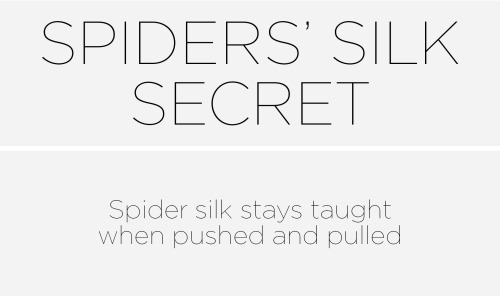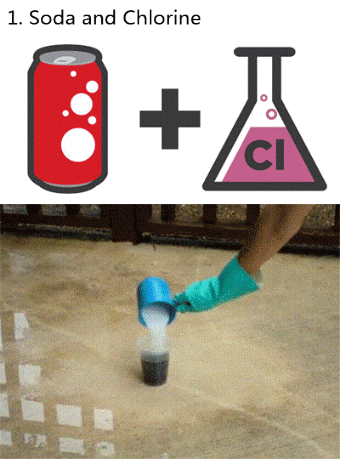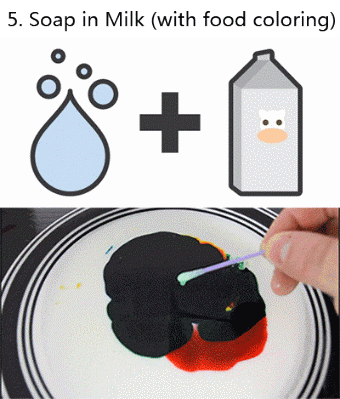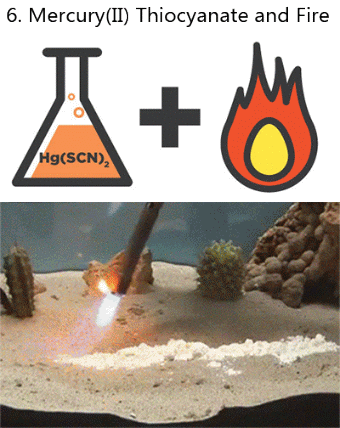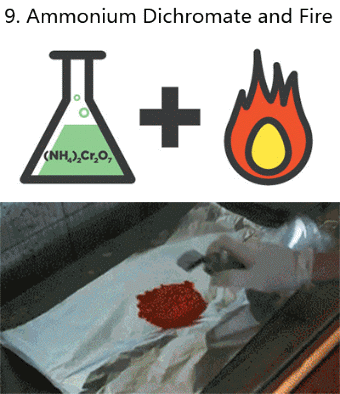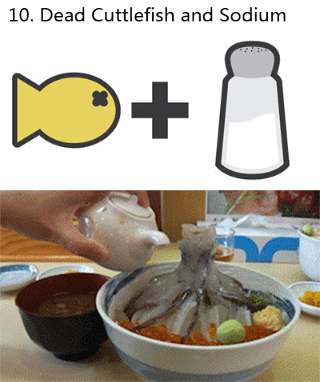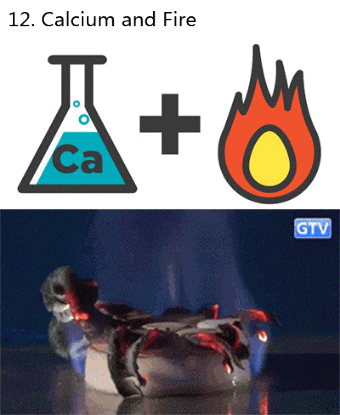Bumblebees Mark The Flowers They’ve Visited With Smelly Footprints, And They Can Tell The Difference

Bumblebees mark the flowers they’ve visited with smelly footprints, and they can tell the difference between odors from family members’ feet and those of strangers, researchers have found.
By sniffing out these dainty footprints, bumblebees can locate good food and steer clear of flowers whose nutrients have been depleted, the scientists reported in a new study.
“Bumblebees secrete a substance whenever they touch their feet to a surface, much like us leaving fingerprints on whatever we touch,” Richard Pearce, a scientist at the University of Bristol in the United Kingdom, said in a statement.
Continue Reading.
More Posts from Drunkscience4u and Others
Happy International Women’s Day!

Today we celebrate International Women’s Day, a day in which we honor and recognize the contributions of women…both on Earth and in space.

Since the beginning, women have been essential to the progression and success of America’s space program.

Throughout history, women have had to overcome struggles in the workplace. The victories for gender rights were not achieved easily or quickly, and our work is not done.

Today, we strive to make sure that our legacy of inclusion and excellence lives on.

We have a long-standing cultural commitment to excellence that is largely driven by data, including data about our people. And our data shows progress is driven by questioning our assumptions and cultural prejudices – by embracing and nurturing all talent we have available, regardless of gender, race or other protected status, to build a workforce as diverse as our mission. This is how we, as a nation, will take the next giant leap in exploration.

As a world leader in science, aeronautics, space exploration and technology, we have a diverse mission that demands talent from every corner of America, and every walk of life.

So, join us today, and every day, as we continue our legacy of inclusion and excellence.

Happy International Women’s Day!
Learn more about the inspiring woman at NASA here: https://women.nasa.gov/


If you dropped a water balloon on a bed of nails, you’d expect it to burst spectacularly. And you’d be right – some of the time. Under the right conditions, though, you’d see what a high-speed camera caught in the animation above: a pancake-shaped bounce with nary a leak. Physically, this is a scaled-up version of what happens to a water droplet when it hits a superhydrophobic surface.
Water repellent superhydrophobic surfaces are covered in microscale roughness, much like a bed of tiny nails. When the balloon (or droplet) hits, it deforms into the gaps between posts. In the case of the water balloon, its rubbery exterior pulls back against that deformation. (For the droplet, the same effect is provided by surface tension.) That tension pulls the deformed parts of the balloon back up, causing the whole balloon to rebound off the nails in a pancake-like shape. For more, check out this video on the student balloon project or the original water droplet research. (Image credits: T. Hecksher et al., Y. Liu et al.; via The New York Times; submitted by Justin B.)


Nasa is to host a major press conference on a “discovery beyond our solar system”.
The event will see the revelation of major information about exoplanets, or planets that orbit stars other than our sun, according to a release. It made no further mention of the details of what would be revealed.
Exoplanets are the major hope for life elsewhere in the universe, since many have been found that resemble our own Earth and could have the building blocks of life. More of them are being discovered all the time.
The event will take place on 22 February at 1pm New York time, it said. It will be streamed live on Nasa’s television station and on its website.
Attending the press conference will be astronomers and planetary scientists from across the world.
Nasa said that the public will be able to ask questions using the hashtag #AskNasa during the conference. The agency will also hold a Reddit AMA, or ask me anything, session straight after the briefing.
-
 replicant1955 liked this · 6 years ago
replicant1955 liked this · 6 years ago -
 dragonkinglover reblogged this · 6 years ago
dragonkinglover reblogged this · 6 years ago -
 dragonkinglover liked this · 6 years ago
dragonkinglover liked this · 6 years ago -
 bibliophilea liked this · 6 years ago
bibliophilea liked this · 6 years ago -
 spitfirealiceagra reblogged this · 6 years ago
spitfirealiceagra reblogged this · 6 years ago -
 spitfirealiceagra liked this · 6 years ago
spitfirealiceagra liked this · 6 years ago -
 lac0rneille reblogged this · 6 years ago
lac0rneille reblogged this · 6 years ago -
 lac0rneille liked this · 6 years ago
lac0rneille liked this · 6 years ago -
 redwoods301 liked this · 7 years ago
redwoods301 liked this · 7 years ago -
 cellyboys liked this · 8 years ago
cellyboys liked this · 8 years ago -
 myinkyfingers reblogged this · 8 years ago
myinkyfingers reblogged this · 8 years ago -
 taylor-renee reblogged this · 8 years ago
taylor-renee reblogged this · 8 years ago -
 caseyiscalico reblogged this · 8 years ago
caseyiscalico reblogged this · 8 years ago -
 malaesthetic reblogged this · 8 years ago
malaesthetic reblogged this · 8 years ago -
 faeseawitch reblogged this · 8 years ago
faeseawitch reblogged this · 8 years ago -
 faeseawitch liked this · 8 years ago
faeseawitch liked this · 8 years ago -
 avgustea liked this · 8 years ago
avgustea liked this · 8 years ago -
 gcnderfuckarchive reblogged this · 8 years ago
gcnderfuckarchive reblogged this · 8 years ago -
 riotouseaterofflesh reblogged this · 8 years ago
riotouseaterofflesh reblogged this · 8 years ago -
 riotouseaterofflesh reblogged this · 8 years ago
riotouseaterofflesh reblogged this · 8 years ago -
 kitesh reblogged this · 8 years ago
kitesh reblogged this · 8 years ago -
 winworks-blog reblogged this · 8 years ago
winworks-blog reblogged this · 8 years ago -
 winworks-blog liked this · 8 years ago
winworks-blog liked this · 8 years ago -
 gay-hellion liked this · 8 years ago
gay-hellion liked this · 8 years ago -
 randomroundabout-blog liked this · 8 years ago
randomroundabout-blog liked this · 8 years ago -
 paperhalidom reblogged this · 8 years ago
paperhalidom reblogged this · 8 years ago -
 paperhalidom liked this · 8 years ago
paperhalidom liked this · 8 years ago -
 caitlikesthings reblogged this · 8 years ago
caitlikesthings reblogged this · 8 years ago -
 hua-mo-jin-is-a-cutie reblogged this · 8 years ago
hua-mo-jin-is-a-cutie reblogged this · 8 years ago -
 hua-mo-jin-is-a-cutie liked this · 8 years ago
hua-mo-jin-is-a-cutie liked this · 8 years ago -
 confetti-critter reblogged this · 8 years ago
confetti-critter reblogged this · 8 years ago -
 runecestershire liked this · 8 years ago
runecestershire liked this · 8 years ago -
 halfragehalfsnark reblogged this · 8 years ago
halfragehalfsnark reblogged this · 8 years ago -
 somethingaskew reblogged this · 8 years ago
somethingaskew reblogged this · 8 years ago -
 ladyswillmart liked this · 8 years ago
ladyswillmart liked this · 8 years ago -
 peppylilspitfuck reblogged this · 8 years ago
peppylilspitfuck reblogged this · 8 years ago -
 three-0fspades liked this · 8 years ago
three-0fspades liked this · 8 years ago -
 starlite-kisses reblogged this · 8 years ago
starlite-kisses reblogged this · 8 years ago -
 starlite-kisses liked this · 8 years ago
starlite-kisses liked this · 8 years ago -
 leewashisname liked this · 8 years ago
leewashisname liked this · 8 years ago -
 bewaretheclairbear reblogged this · 8 years ago
bewaretheclairbear reblogged this · 8 years ago -
 sleepyheathen reblogged this · 8 years ago
sleepyheathen reblogged this · 8 years ago -
 montanamusings reblogged this · 8 years ago
montanamusings reblogged this · 8 years ago -
 itsspace reblogged this · 8 years ago
itsspace reblogged this · 8 years ago -
 lone-wolf-pack reblogged this · 8 years ago
lone-wolf-pack reblogged this · 8 years ago -
 andromeda1023 liked this · 8 years ago
andromeda1023 liked this · 8 years ago
The official page of Drunk Science! An enthusiastic host performs simple experiments and then humorously explains the science behind the result, all while visibly drunk.
126 posts
